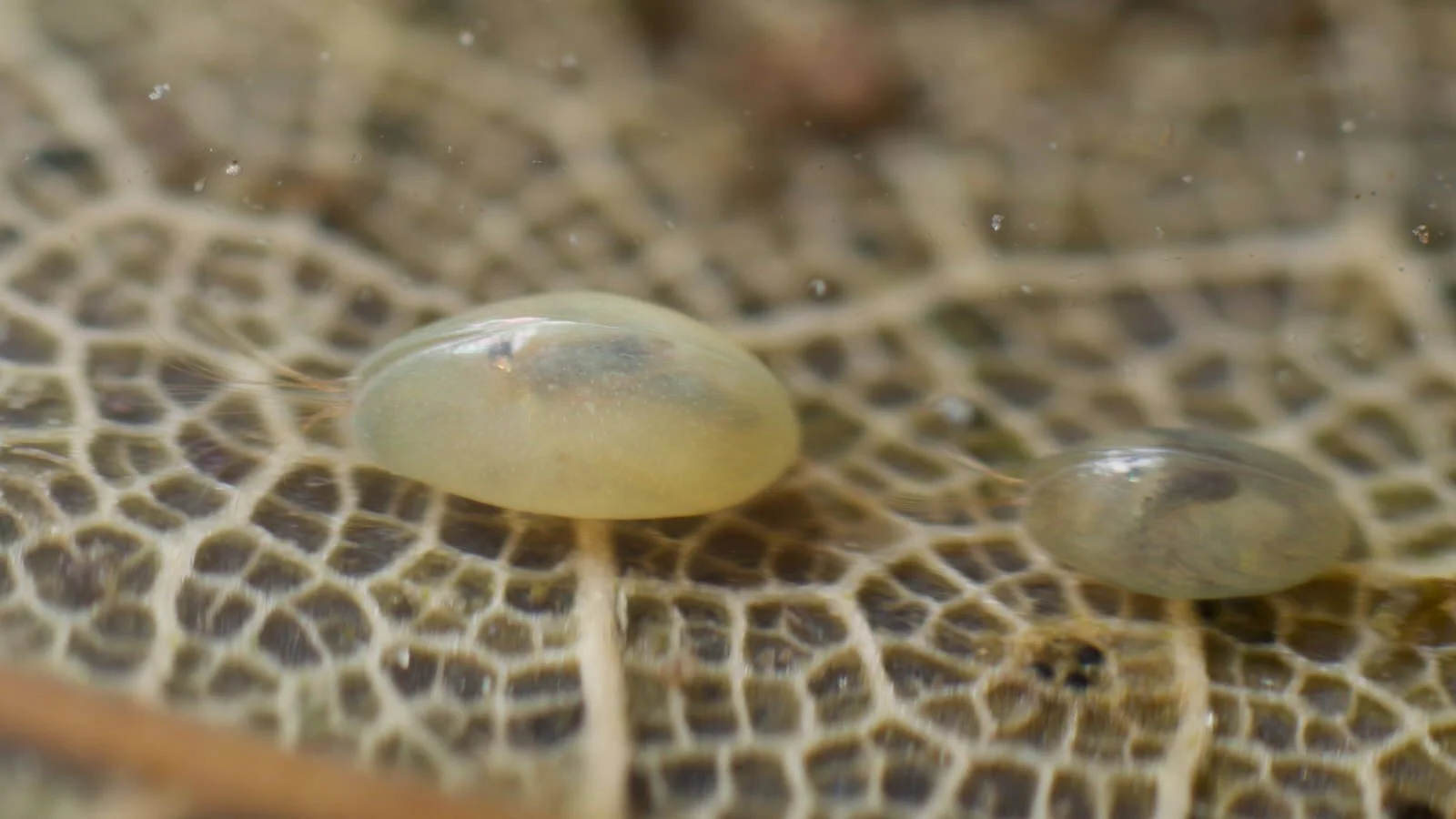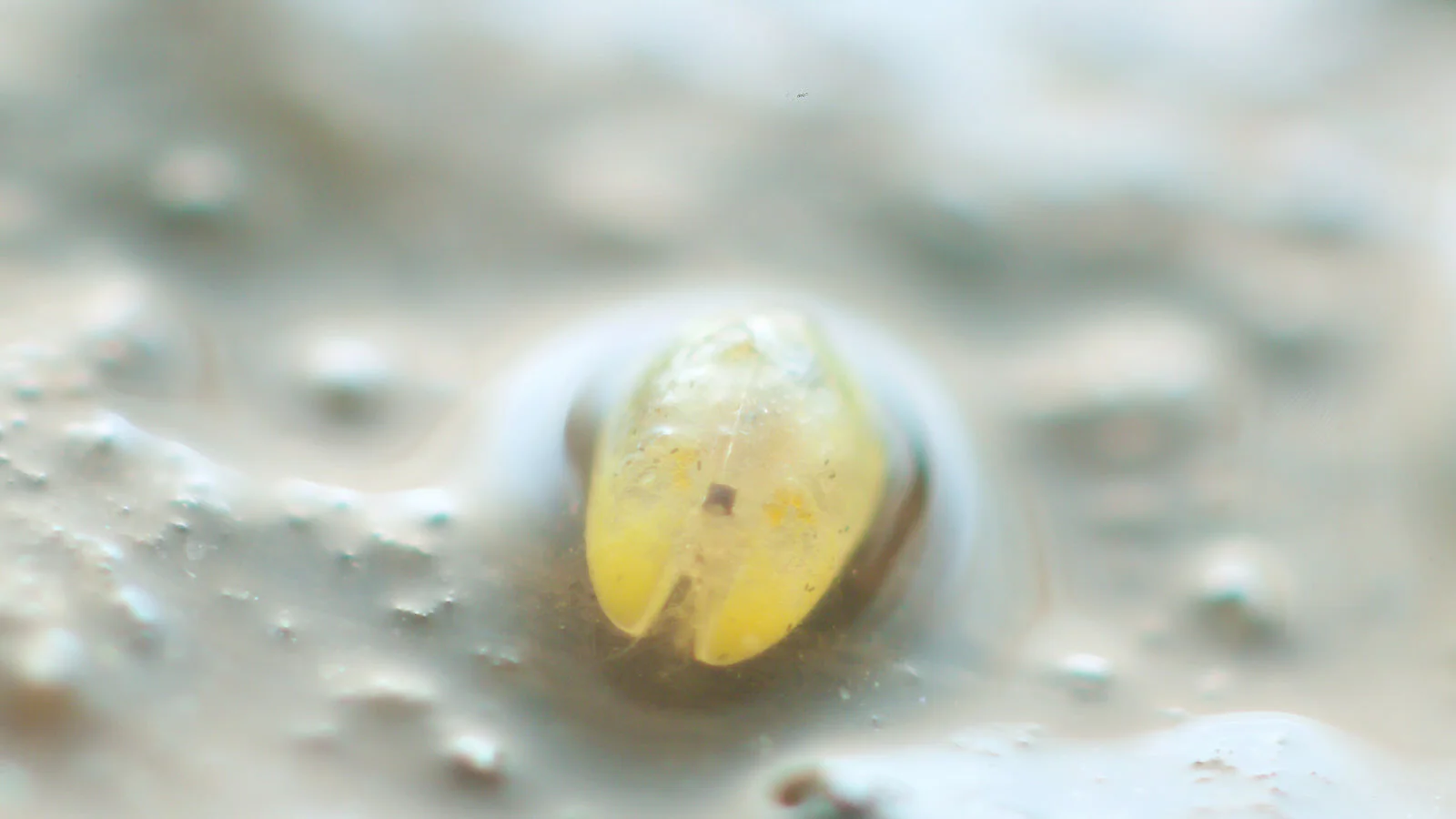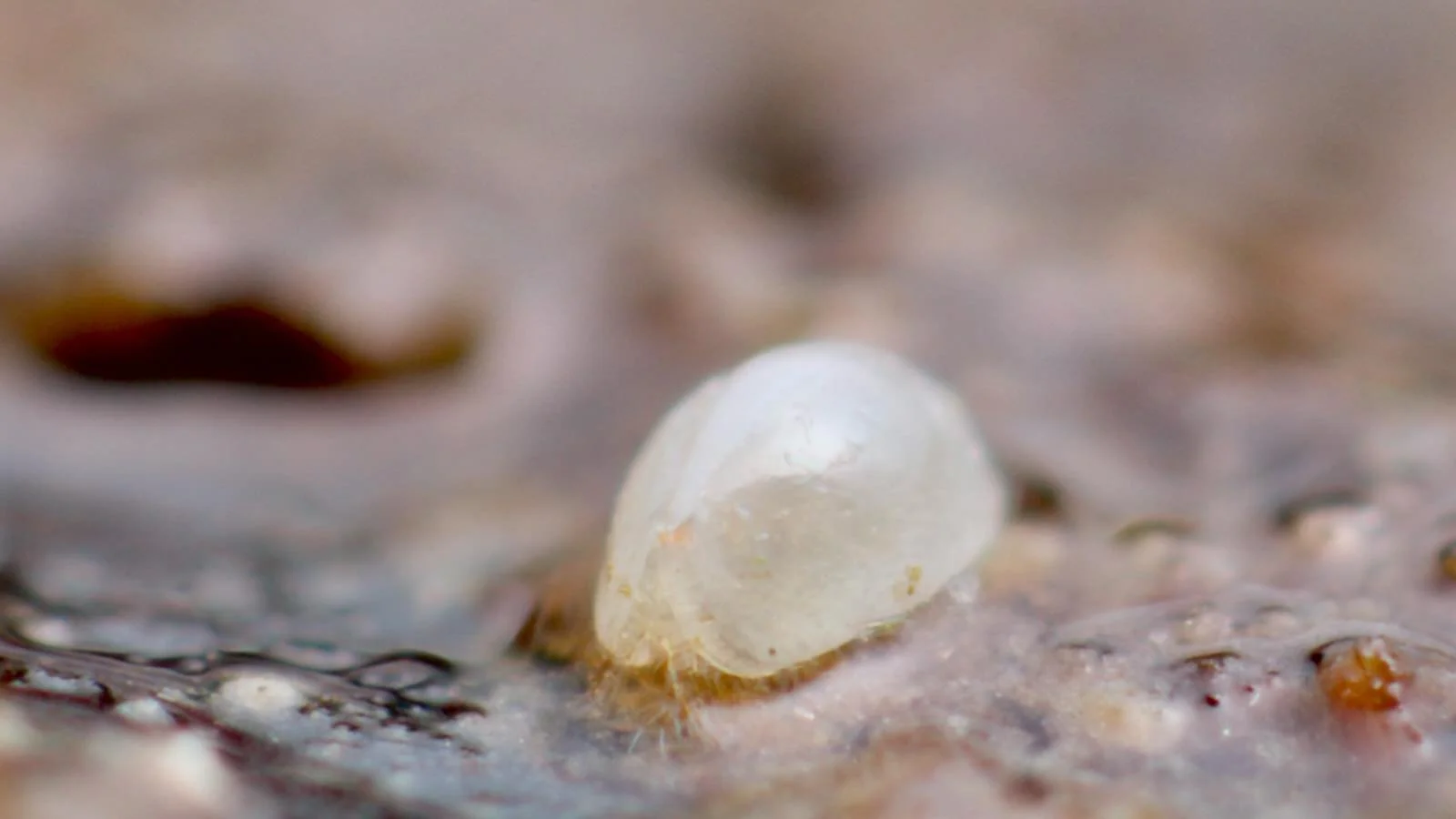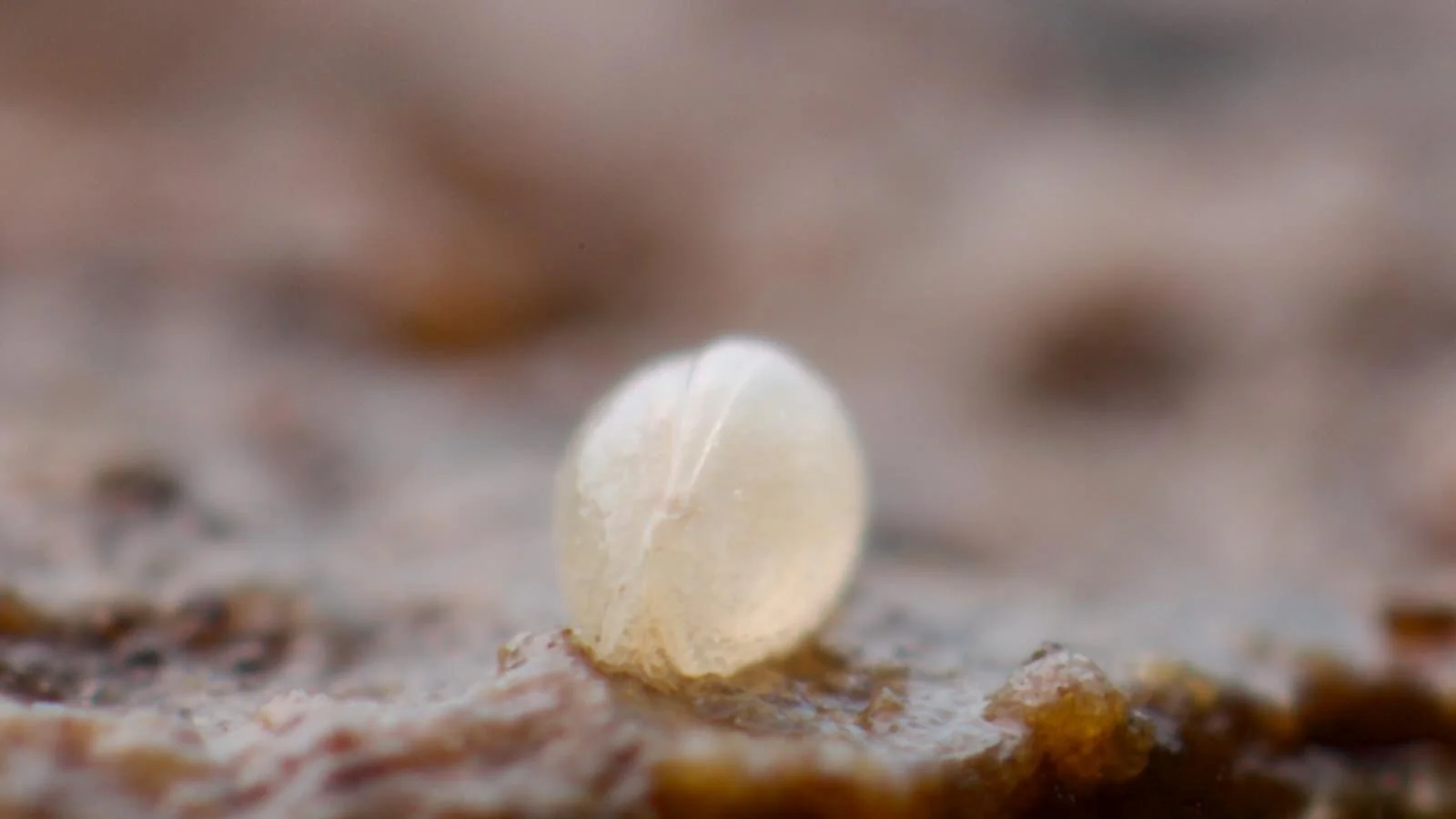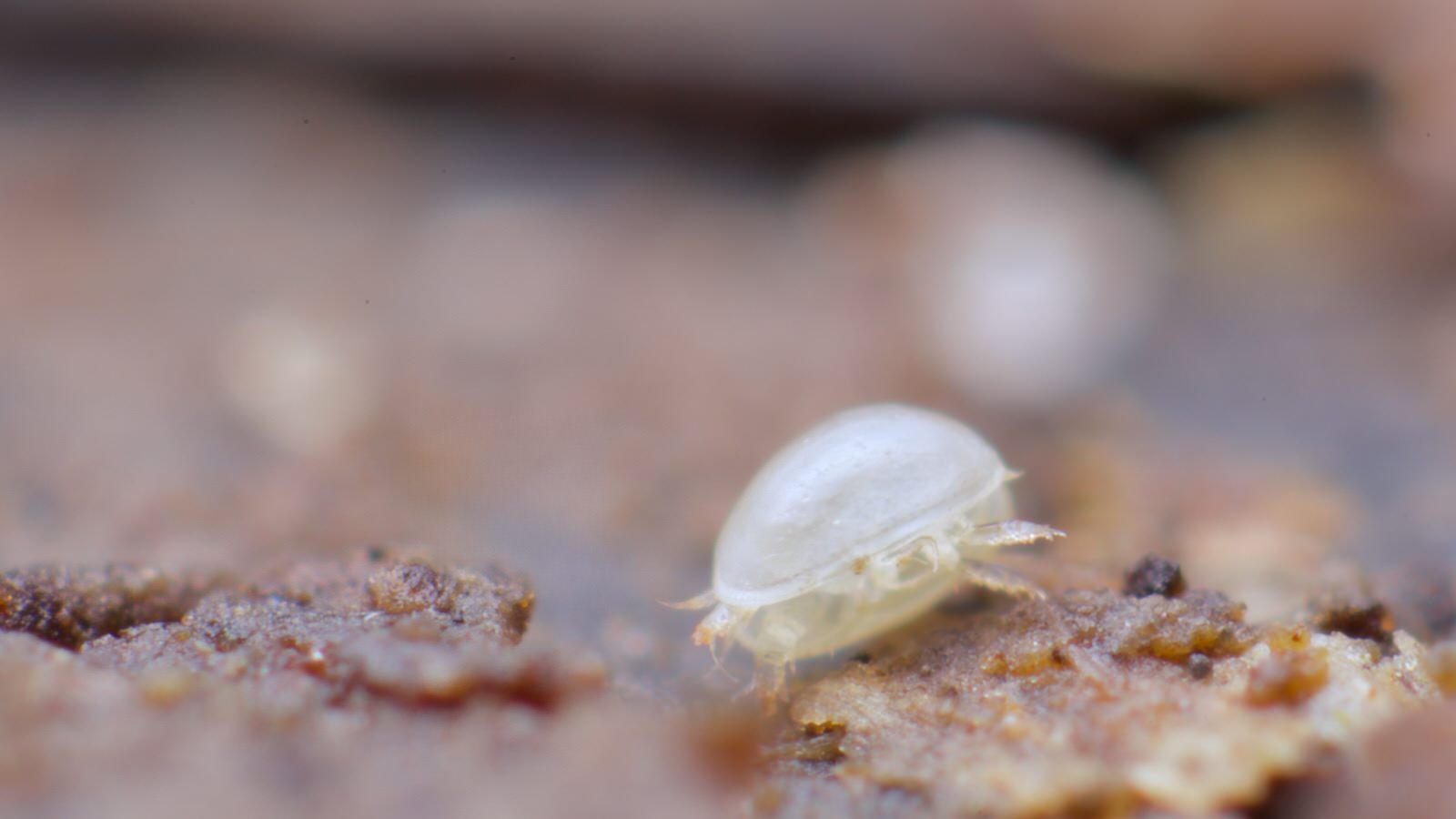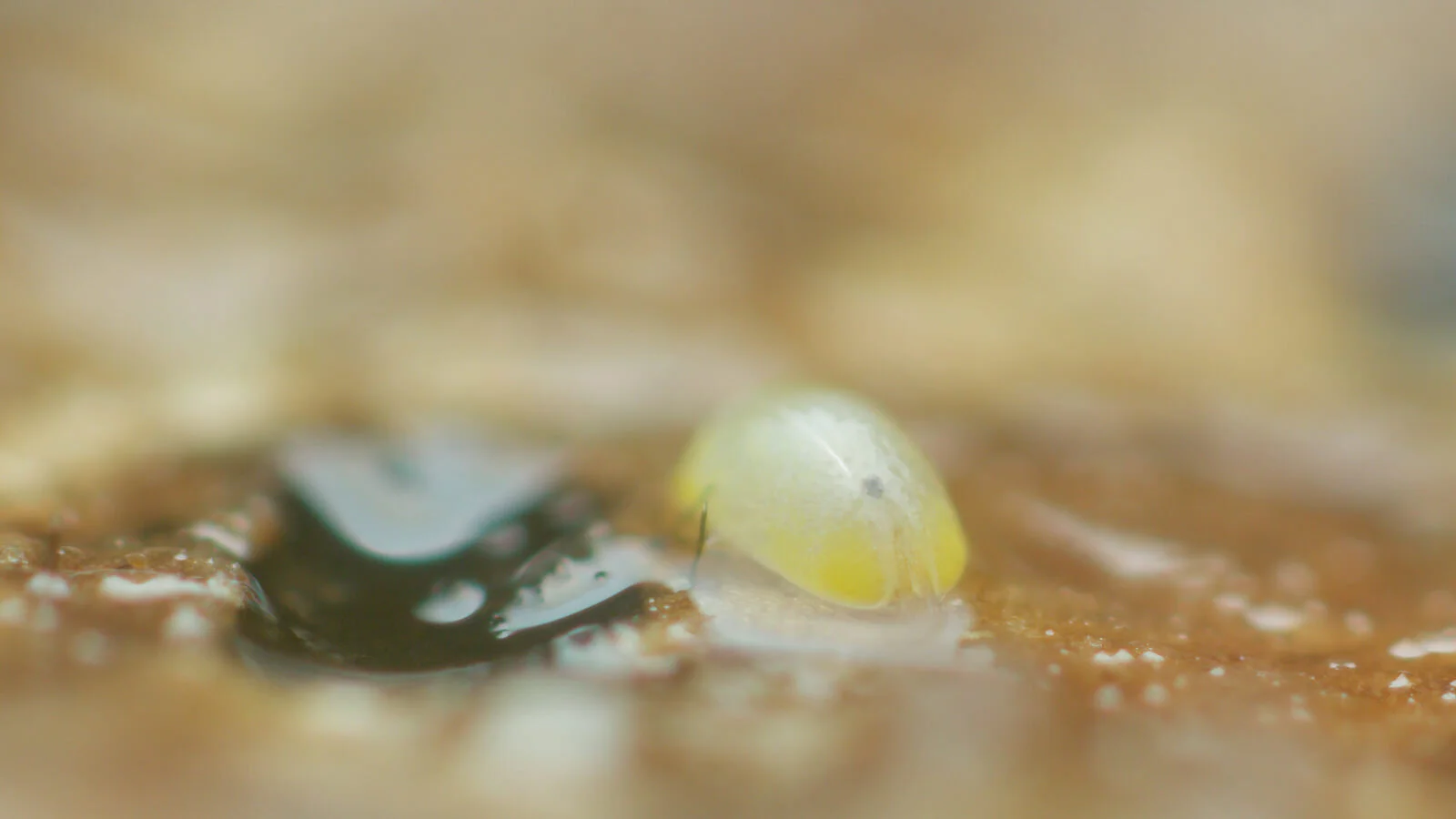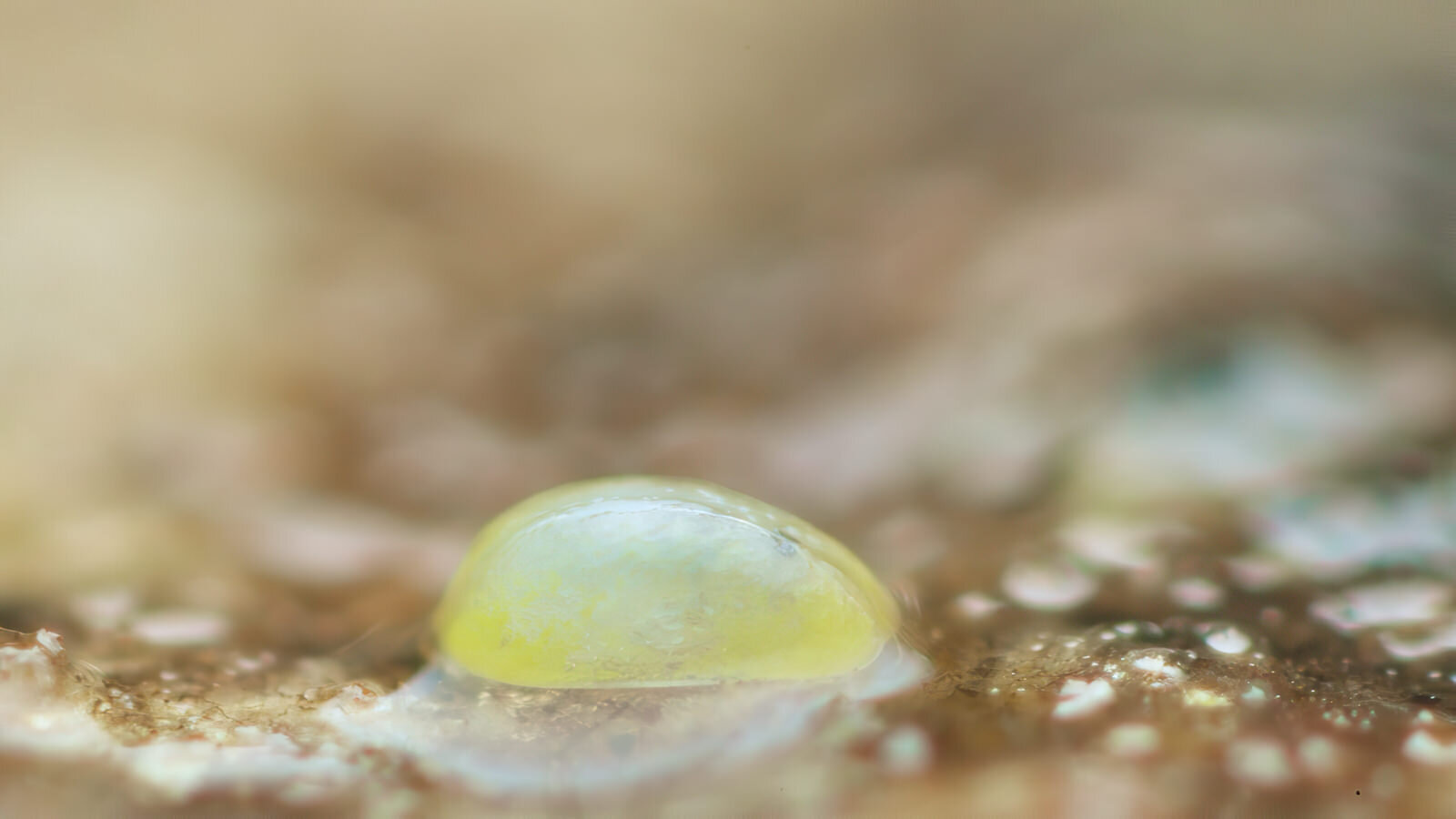
Terrestrial ostracods, or seed shrimps
Ostracods, commonly known as seed shrimps or mussel shrimps, in the class Ostracoda, are usually aquatic, tiny, benthic bivalves that can be found living around or in the sea bed sediments, or swimming freely at the water’s edge of tropical oceans, en mass, exhibiting a haunting blue luminescence. The largest ostracod, Gigantocypris, is an marine, aquatic, free-swimming 32mm giant. Their diet varies, with some ostracods being filter feeders, while others are scavengers or carniverous.
These adorable crustaceans can also be found in lakes and ponds in a fresh water environment, where they can be sometimes seen, coasting about, antennules wafting. As ostracods are susceptible to different types of pollution, they are perfect bioindicators of a healthy lake or pond and really are wonderful to observe moving and feeding...
an adult and juvenile ostracod, feeding in a winter pool, Somerset, UK
Ostracods moult eight times before become adult, going through many changes in the shape and function of their appendages, until the adult form. The two valves of an ostracod are made up from a low-magnesium, calcite-impregnated chitin, which has meant that they have preserved very well in the fossil record.
Interestingly, a fossil ostracod, Colymboathon ecplecticos was discovered in the Coalbrookdale formation in Herefordshire, UK in 2002, dating from 425 million years ago. Due to the fast ash burial after a marine volcanic eruption, the soft parts of the 5mm long fossil ostracod were perfectly preserved, meaning that the oldest penis ever discovered so far is that of an ostracod….
However, and more to the point, a few taxa in the superfamilies of Cypridoidea and Darwinuloidea as well as some members of the semi-terrestrial Terrestricytheroidea superfamily have become fully terrestrial. They coast around in the film of water covering the underside of wet logs as well as leaf litter and the wet soils of native rainforests. Originally discovered in South Africa, these amazing land-dwelling crustaceans are now also known from New Zealand, UK, Brazil and Australia. So far, the highest diversity of terrestrial ostracods globally has been recorded in Brazil.
Both the Cypridoidea and Darwinuloidea ostracod superfamilies are entirely fresh water-based, with the terrestrial taxa expanding landwards from lakes and ponds, while the coastal, already semi-terrestrial Terrestricytheroidea superfamily is unique as having originated from marine and brackish environments before some genera slowly invaded coastlands to become fully terrestrial crustaceans.
The photographs here are of a Mesocypris species from New Zealand, probably M. audax, and part of the Cypridoidea superfamily. This one is around 0.5mm big, although this species can get up to around 1mm.
Closeup showing how their specialised hairs collect water around them. It’s also possible to make out their antennula (filiform appendages of antennae). Mesocypris species, Fox Glacier, New Zealand
To get around the problem of being terrestrially-adapted but still in many ways aquatic, they are able to gather water in and around their shells, using specialised hairs to trap the liquid which spreads around them as they travel. If their limited water supply isn't periodically replenished, they perish.
Research from New Zealand in the 1980s shows that terrestrial ostracods are only able to thrive within specific and narrow moisture and temperature parameters, autumn being their most common period. Terrestrial ostracods mostly appear to reproduce asexually, although the reason is not entirely clear. The usual reasons are assumed to be due to generally having a low population density and a very stable environment, or a lack of competition, predators and parasites. As more research is done, things will no doubt become clearer.
The UK has its own semi-terrestrial ostracod, Terrestricythere elisabethae that lives in the leaf litter on the edge of tidal estuaries. They are unique in that they have what is described as a visordont hinged valve system, with one valve slipping over the other when opening, as can be seen in the photo below.
Terrestrial and semi-terrestrial ostracods are only able to walk due to having a surrounding film of water to hold them up. They are a curious animal to try and attempt to be terrestrial as they are not stable without a film of water. The fully terrestrial ostracods rely on the heavy rains found in rainforests to survive. If the film of water dries out, they can only close their valves and wait for the water to return, unable to move. If they fall over, they cannot right themselves and remain, occasionally opening their valves and kicking their feet on their side, as in the photo below, before closing up again.
A short video showing the walking movement of Terrestricythere elisabethae, from Hampshire, UK
A superb website for all things Ostracod, mostly aquatic, is on the Lake Biwa website, in Japan, run by Robin Smith.
Mesocypris species with a juvenile Novokatianna species of Collembola, Punakaiki, NZ April 2016
Mesocypris species, Fox Glacier, New Zealand
Mesocypris species, Fox Glacier, New Zealand
